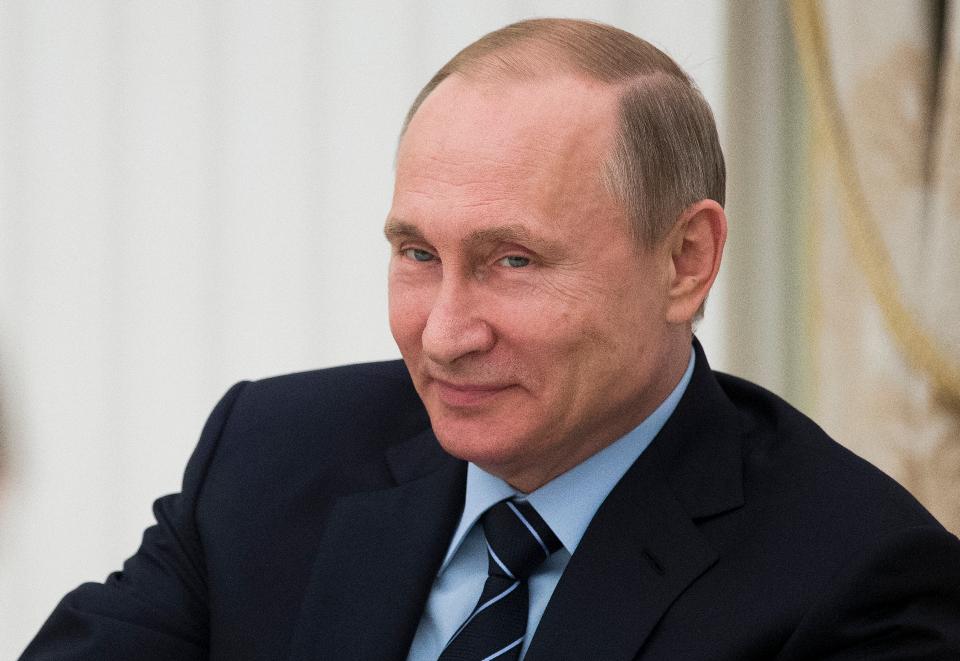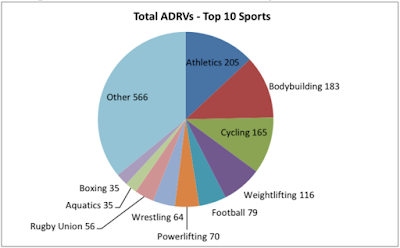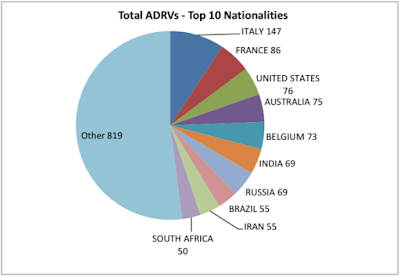
This article was last updated on April 16, 2022
Canada: ![]() Oye! Times readers Get FREE $30 to spend on Amazon, Walmart…
Oye! Times readers Get FREE $30 to spend on Amazon, Walmart…
USA: ![]() Oye! Times readers Get FREE $30 to spend on Amazon, Walmart…
Oye! Times readers Get FREE $30 to spend on Amazon, Walmart…
With the Western media vilifying Russia and Vladimir Putin for just about everything, the recent annual report for 2016 from the World Anti-Doping Agency (WADA) provides us with some very interesting statistics, particularly in light of the ban Russian athletes movement during the 2018 Winter Olympics in South Korea. Let’s look at some of WADA’s findings.
In order to better understand the WADA Anti-Doping Rule Violation (ADRV) report, we need to examine the terms and abbreviations that the organization uses and how the outcomes of Adverse Analytical Findings (AAF) are classified and defined. Here are the classifications of the outcomes of Adverse Analytical Findings:
Anti-doping Rule Violation (ADRV): Cases for which a final decision has been rendered and a sanction (i.e., a reprimand or period of ineligibility) was imposed against the athlete following the conclusion of disciplinary proceedings.
Medical Reasons: Cases in which the athlete had or was granted a valid TUE that justified the presence of the prohibited substance in the athlete’s sample and cases that are otherwise medically justified AAFs (low-level athletes as per the definition of Athlete in the Code3).
No Case to Answer: Cases closed at the results management level, excluding TUE cases. Such cases include for example: authorized route of administration for glucocorticosteroids; departure from International Standards; or cases outside of WADA’s jurisdiction (including non-Code signatories).
No Sanction: Cases in which the athlete was exonerated following the conclusion of disciplinary proceedings. For example, certain meldonium cases were closed as No Sanction following the Notice regarding meldonium issued by WADA on 30 June 2016.
Pending: Cases that have not yet been finalized following either the conclusion of disciplinary proceedings or at the results management level.
Urine and/or blood samples are collected from athletes by anti-doping organizations (ADOs) around the world and the results are reported to WADA, including the decisions of all AAFs. A total of 229,514 samples were collected by ADOs in 2016 and were analyzed at WADA-accredited laboratories. During the year, a total of 3,032 samples were classified as Adverse Analytical Findings with the following breakdown:
1.) 1,326 (44%) samples were confirmed as ADRVs (sanctions);
2.) 339 (11%) samples were dismissed because of a valid medical reason;
3.) 140 (5%) were categorized as “no case to answer” (i.e. case closed for a valid reason other
than medical reasons);
4.) 561 (19%) samples resulted in “no sanction” because the athlete was exonerated (including
but not limited to meldonium cases in light of the Notice on meldonium published by WADA on
30 June 2016);
5.) 666 (22%) samples were still pending.
Of the 1,326 samples collected that were classified as Anti-doping Rule Violations, 1,046 were from male athletes and 280 were female athletes, 1,030 were in-competition and 296 were out-of-competition and they represented 109 sports/disciplines and 113 nationalities.
Here is a pie chart showing the sports with the highest number of Anti-doping Rule Violations:
Just for fun, let’s look at some of the more interesting sports (and some activities that most of us would not particularly classify as “sports”) that had athletes testing positive for banned substances along with the number of ADRVs:
Archery – 4
Arm Wrestling – 9
Badminton – 2
Billiards – 2
Bowling – 1
Bridge – 7
Jet-Ski – 1
Sailing – 1
Surfing – 2
Table Tennis – 2
Tug of War – 1
Some of these are almost laughable; doping in billiards?
Now, keeping in mind the vilification of Russian athletes in 2017 and 2018, here is a pie chart showing the ten nationalities with the highest number of Anti-doping Rule Violations according to WADA’s 2016 report:
By a wide margin, Italy has the most doping infractions. As well, you will notice that Russia is tied with India for sixth place with fewer ADRVs than the United States (among others).
It is interesting how little coverage that the 2016 version of the World Anti-doping Agency received, particularly in the Western media. I’m guessing that’s for two reasons; first, there were more doping violations by the United States than just about every other nation on earth and second, because it doesn’t fall into the “bad Russia” mantra that seems so pervasive in what passes for news coverage today.
Click HERE to view more.
You can publish this article on your website as long as you provide a link back to this page.



Be the first to comment